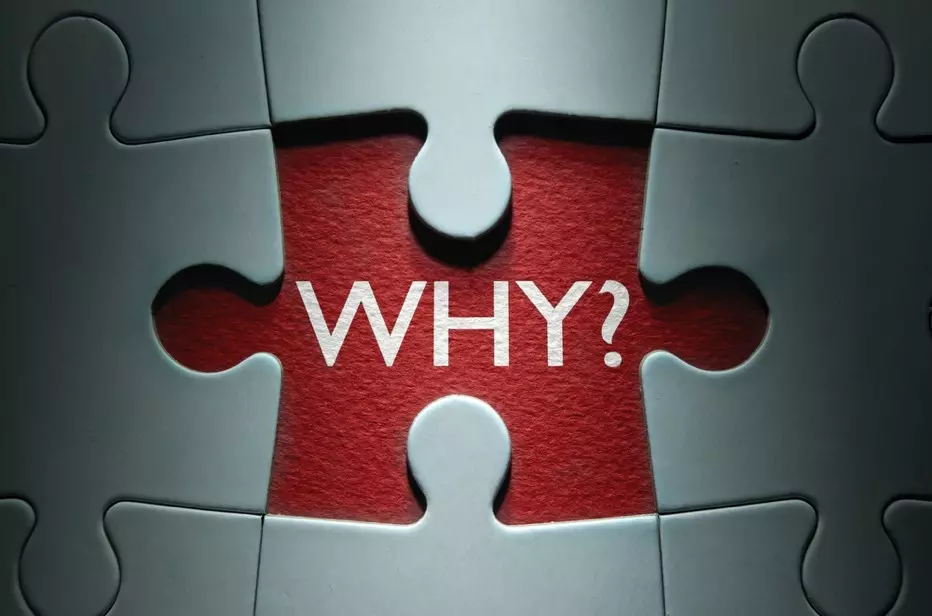Many entrepreneurs go into business without truly knowing why. Leaders can identify and harness their purpose to take their business and life to the next level
I started my first business, Fit2Go when I was 24 years old. I saw a market gap and filled it. This was textbook entrepreneur stuff at an early age, but I made an all-too-common mistake: I worked for a full seven years before I truly understood why I was doing it.
Once I finally realized my purpose, I used it as the catalyst for multiple changes in my life and the lives of others. I created two other businesses—RawBar2Go and The Profit Recipe—the latter of which involved becoming a Professional EOS Implementer™ of the Entrepreneurial Operating System®.
My “Why” connected who I am to what I do. It restructured my approach to life and business, empowering me to live my life by design. And today, it’s my purpose to help other leaders do the same.
Starting with Fran and Simon
Through the Entrepreneurs Organization (EO), I met Fran Biderman-Gross, a NY based strategista and the CEO of Advantages Marketing Agency, and one of Simon Sinek’s case studies on how purpose creates alignment of teams and clarity of message.
Simon Sinek is the author of the bestseller Start with Why: How Great Leaders Inspire Everyone to Take Action and the speaker of one of the most successful TED Talks of all time. Sinek’s concepts can be neatly summarized by his Golden Circle model—it places What, How, and Why in concentric circles, with Why in the center—and his words, “We’d achieve more if we chase the dream instead of the competition.”
I went through a Why Discovery with Fran in 2013, and it changed my life. By putting words to something I already had in me, I was able to start filtering my decisions and aligning my actions to only act from a place of purpose. It created an awareness in me that helped me start building the business by design—so that I could live my life by design.
Once I uncovered my Why and my business was set up to run by design using EOS, I was able to start empowering leaders to self-reflect and go through the same journey. And that’s when Fran and I decided to build workshops to help leaders and their teams go through the Why Discovery process.
I use this emphasis on self-reflection to help my clients face their challenges. And often, many issues stem from disengagement. It’s like being lost and stuck in the rat race of a day-to-day routine, experiencing a disinterest that you can’t quite put your finger on. Basically, forgetting Why we do things means not being conscious of where we’re spending our time and our unique abilities—and both a business and an entrepreneur’s personal life will suffer without this focus.
My Why is empowering others to live life by design. I didn’t come up with that in a day; it took a little time and some reflection to understand it. A Why is something that every leader has yet they may go years without discovering it. But we can start to look for it in different patterns.
This may make this concept sound even more mysterious—though it actually isn’t—but a Why can be the result of both slow-burn wisdom and a sudden epiphany. The problem is that the longer it takes, the more time is wasted—and in business, time and purpose equal success. This is one of the reasons that my Why is to help entrepreneurs actively find theirs and quickly apply it to improve their lives.
The 7-year glitch
I was working, working, working at my first business for over seven years, developing a meal delivery company that was one of the first in the market. I was trying to change consumer behavior and leverage future trends early. Eventually, I became completely disengaged because it demanded so much and seemed to give so little in return. I found myself thinking “Why am I doing this?” There was a fundamental disconnect between who I was and what I did.
Even though the business grew 30 to 40% per year in the first years, I hit a plateau and didn’t know how to make it grow again. The business wasn’t growing as fast anymore because it wasn’t aligned with my purpose. I was in an “automatic entrepreneur” mode; I then decided to start two other businesses to make up for the lack of growth of the first one. I was starting more businesses just for the sake of growing revenue and capitalizing on a trending opportunity.
Finally, some introspection and knowledge-seeking brought me in touch with Fran Biderman-Gross. She conducted a Why Discovery with me, and I realized that my product and business weren’t my purposes. Instead, it became clear that my Why had always been my people—specifically, empowering my employees to improve their lives. Immigrants and low-wage employees had a chance to learn and grow through my business, and most of them grew into better opportunities. I realized that I had never felt bad when an employee found a better salary or big business opportunity—and I always encouraged my people to think big and move forward.
From that moment, I lost interest in simply growing products and services for their own sake and realigned my focus on the betterment of people’s lives. This removed the disconnect I was feeling and reengaged me with my business on a powerful, purposeful level. And the funny thing is, this realignment actually helped the mechanics of growing a business that I’d been totally focusing on all along.
What Why is all about
Why is about purpose. But let’s define this: “Purpose” frequently gets misconstrued as just following a “passion.” While a passion is certainly something that you are intensely interested in and motivates you, it can be just a hobby—something that you really like to do, but that won’t pay the bills.
The Why Discovery process uncovers what leaders are interested in and best at and how those things can be applied in business. Putting this purpose to work enables us not just to earn a living at something we enjoy but to also really create value for ourselves and the people around us. The process then expands with defining core values (The How), and both feed into the products and services (the What) a business provides.
But it all starts with a Why. Leaders learn from past lessons to self-align with their innate vision and also align others with it. When we have this clarity and the ability to communicate it, we can create a common purpose that’s shared by both our team and our business audience.
Expanding your purpose to other businesses and projects
A common purpose makes my multiple businesses work—my Why of empowering others is at the heart of them all. Fit2Go empowers people to have a healthy lifestyle at work. RawBar2Go allows people to do the same at sea. And The Profit Recipe is all about empowering leaders with the tools, proven processes, and experience sharing that enable them to build a business by design so that they can succeed and better their lives.
When a leader embraces their Why, it becomes a filtering system for what they should or shouldn’t do. We can gather all of our ideas and easily identify which ones align and which conflict. For example, I did a Why Discovery for an entrepreneur who was running seven businesses. Once he spent some time digging into his purpose and realized what it is—what truly motivated him—he ended up selling two of the businesses because they didn’t align with this Why. And the other five (and his energy as a leader) flourished from this clarity.
Entrepreneurs are the core target of this structured approach, but they aren’t the only ones who can benefit from it. Why Discovery is a universally valuable process. This framework certainly helps people who are disengaged from their business or their job and lost as to where to go next—but it can also assist a teenager who doesn’t know what to study. Or an empty-nester parent looking to redefine themselves for the future. Or anyone seeking meaning and a reason for why they’re doing what they do every day.
Even when you think it’s all about money, it isn’t
I know there are plenty of entrepreneurs who would say that the Why in their lives is “to make money.” And sure, that’s a big part of why we’re in business or we’d all be doing this for free. But as an end goal? This is a view that’s fundamentally flawed.
I see money as a tool, not a destination. We could have all the money in the world and still want more. It’s not money itself, it’s what it can afford us to do. Think about it. Even the most money-hungry leaders have the seed of a purposeful Why as their motivation. They want money so they can live a certain way, do certain things, or be a certain person.
In short, whether they acknowledge it or not, many people run a business to help them live their life by design. Nevertheless, if they are doing it strictly for the sake of money—and the business doesn’t align with their true purpose—the venture will be unfocused, misaligned with who is leading it, and less successful than it could be.
What’s your Why?
I can’t tell you for sure, but it’s likely defined by your daily contribution and its impact. What does what you’re doing do for you and others, long term? These questions are the beginning of a new awareness for lost leaders, and a guiding star toward a more fulfilling future.
Empower your Leadership Team and improve efficiency, increase value, and foster collaboration to get better results. A professional Facilitator can ensure that all of your members are on the same page, so you can kick your business up a notch. Connect with The Profit Recipe to Achieve Traction.



